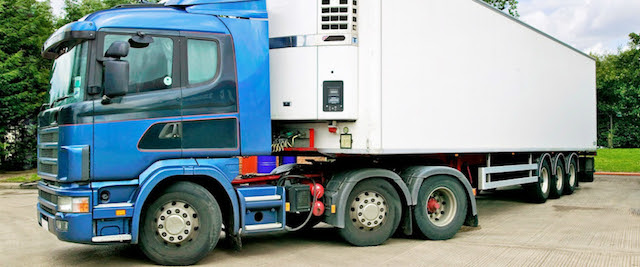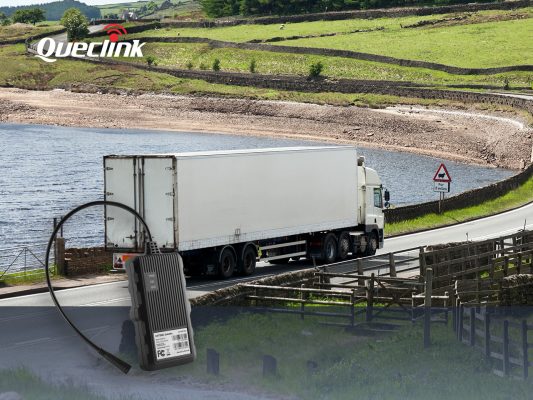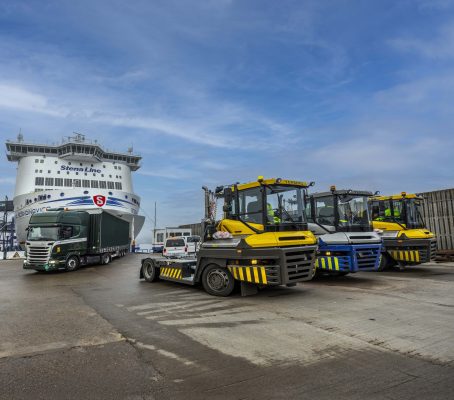Business use of data and analytics is growing, reshaping risk management for HGV operators and hauliers.
 The phrase “every business is a digital one” is on the rise, even among strongly traditional markets and firms. Data is fast becoming a dominant force supporting business efforts to act more efficiently and productively. Companies of all sizes, including fleet and HGV-using firms, can make more realistic operational decisions, and adjust their long-term plans based on better use and understanding of data.
The phrase “every business is a digital one” is on the rise, even among strongly traditional markets and firms. Data is fast becoming a dominant force supporting business efforts to act more efficiently and productively. Companies of all sizes, including fleet and HGV-using firms, can make more realistic operational decisions, and adjust their long-term plans based on better use and understanding of data.
Smart vehicles continue to pump out huge volumes of data, and the data they churn out provides fleet managers with key performance indicators that support better business decisions, while insurers can use them to adjust insurance policies based on real-time driver performance.
As 5G boosts bandwidth on smarter roads and governments look to build an electric-friendly infrastructure, the growth in connected vehicles, road transport systems, supply chains and logistics, makes live monitoring data vital to business decisions.
Data provides benefits for business and risk management strategies
Growing automation and data-based decisions give HGV operators, managers and hauliers opportunities to boost their business. From managing existing fleets and drivers to growing the business by smarter hiring, on-boarding and training decisions, data can be relied on to provide the necessary insights.
Data is gathered through day-to-day operations and logistics, while telematics monitor speed and driving style, and in-cab cameras can track attentiveness and other activity. They can all be used to identify best practices that can be followed across the HGV fleet. They can also be used to prove compliance with business or driver policies, while supporting strategic-level decisions as fleets expand or modernise.
Data also helps change operational perceptions within a fleet and among drivers. What used to be seen as intrusive “big-brother behaviour” now highlights efficiency and money-saving methods. Data helps provide better business communications and engagement, all key to successful operations, creating a high-performing fleet, motivated drivers while at the same time reducing HGV maintenance and downtime.
Data boosts HGV and driver risk management
Improving driver behaviour remains a challenge for firms, as successful training boosts performance and lowers risks, reducing both accidents and insurance costs. Using risk management and telematics insurance delivers more efficient operations whilst integrating them with maintenance data boosts efficiency.
Trends such as pay-how-you-drive and usage-based insurance are increasingly popular and will help grow the insurance telematics market. It is expected to grow by 18.5% CAGR through to 2023 according to a recent report “Global Insurance Telematics Market, Growth, Trends, and Forecast.”https://www.researchandmarkets.com/reports/4474010/global-insurance-telematics-market-segmented-by.
Many fleet risk management solutions support managing driver risk with services linking in-truck telematics to business dashboards and mobile apps that monitor performance for drivers and HQ. The ability to update jobs live, provide alerts to road incidents all add business value and reduce the risk for HGV fleets.
Most fleet risk managers must juggle competing business concerns to minimise cost and maximise HGV availability. This sees them tracking many moving pieces of the fleet and multiple data points. Modern digital fleet tools present that data at the right time to help make the best decisions, reducing the risk to drivers, the fleet and the company.
Reduce risk with real-time insurance
Technology continues to play a growing part in fleet and HGV operations. Real-time data is one trend helping to change the insurance landscape for fleets, as it becomes common for personal car drivers. Real-time insurance supports fleet and driver risk managers by simplifying processes, ensuring drivers perform to their best on the roads, helping to reduce accidents, maintenance and business costs.
Analytical information supports the reduction of risk for data-led insurance policies, enabling fleet managers to access transparent and real-time insurance, reducing risk and speeding up claims management.
Accurate risk models use machine learning to create evolving scoring and pricing, driving better performance from real-time insurance services. HGV insurance, with many vehicles already providing data, will follow suit, as more products become available from business providers including the likes of Rideshur
As more insurers turn to similar services and technologies to calculate premiums and pricing, fleet managers should adopt early to capture insurance savings for fleets and encourage drivers to display their skills. Telematics tracks driving styles, and accounts for environmental factors including weather and traffic. That data will speed up the processing of claims, and by using real-time insurance for every trip undertaken by the fleet, managers can see immediate in-policy insurance reductions, without holding out for annual renewals.
While some managers might look for self-driving trucks and smart-convoy systems as big savers, paying attention to the smaller details like insurance and maintenance, all joined up through digital services, will provide the big economies, and are available today.
By Wayne Stuckey Head of Underwriting at Rideshur


